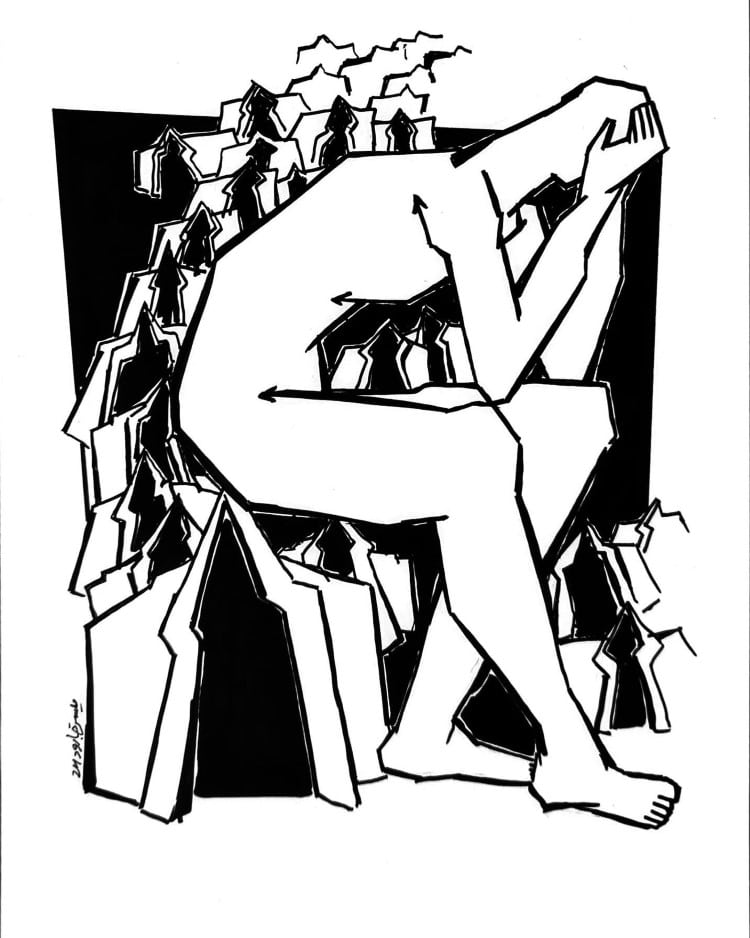
October 7 is a date that changed Maisara Baroud‘s life. The Palestinian artist, who is based in Gaza, saw his world turned upside down as Israel’s war on Hamas exploded. In the ensuing months, Baroud has been displaced more than 10 times but has managed to keep his daily drawing habit, using his art to help cope during this time of tragedy.
Baroud’s war drawings, which he publishes on Instagram, are all entitled I’m Still Alive. This simple, poignant declaration is a way for Baroud to document the atrocities he sees around him and also to let the world know that he is a survivor.
His drawings show cities destroyed by bombs, people fleeing their homes and living in encampments, survivors carrying the bodies of the deceased, and bodies piled up after extensive bombing. Baroud’s personal vision of war is one of a man trying to help his family live another day.
A selection of his drawings is now on display in Venice’s Palazzo Mora as part of the Foreigners in their Homeland exhibition of Palestinian artists. Organized by the Palestinian Museum US, the show runs until November 24, 2024.
We had the opportunity to correspond with Baroud, who generously answered our questions about his daily drawings and living in war-torn Gaza. Please read on for My Modern Met’s exclusive interview.
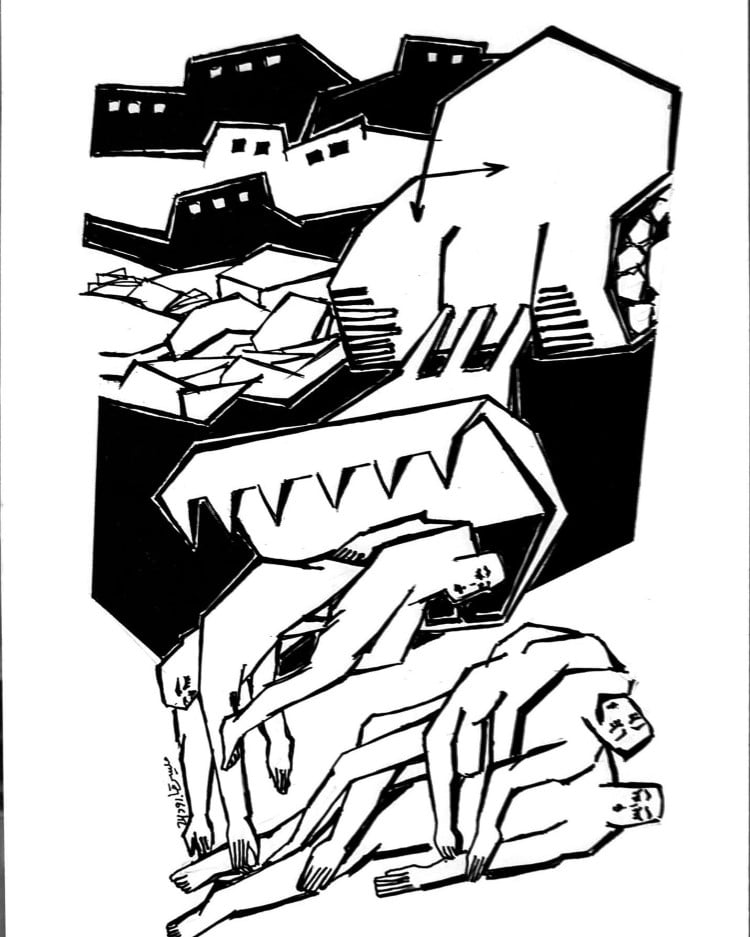
When and why did you start your daily sketches?
For several years, I have been keeping a diary by drawing in special sketchbooks. I used to keep the drawings for myself, and the idea of posting them and sharing them didn’t occur to me. But, during the pandemic, as we were forced to stay at home, the internet was our only outlet.
So, I would draw on a daily basis, publish my drawings, and would group my visual journals by name and topic.
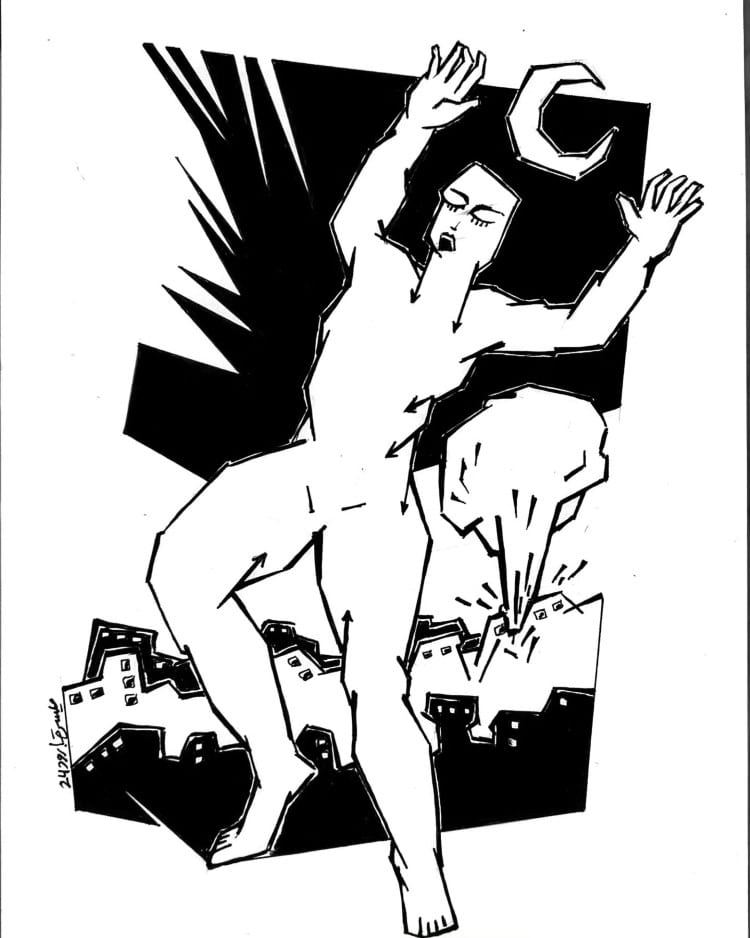
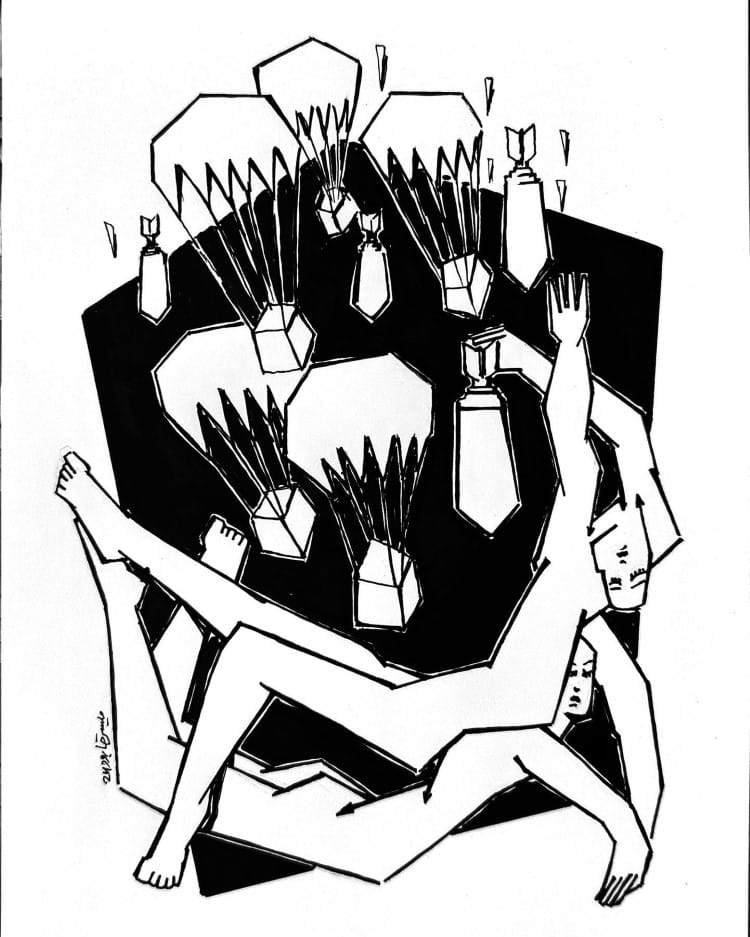
How has their meaning changed for you since October 7?
The October 7 War—the occupation—killed all of our dreams and left nothing with its planes and missiles. However, I made sure to maintain my daily drawing habit and publish whenever the opportunity arose.
Communication and contact with friends have been difficult, and on some days, it has been impossible due to the frequent cutting off of the telephone, internet, and electricity. I took it upon myself to tell the story as I saw it with my own eyes, away from propaganda and the official narrative, by recording and documenting a war diary. Through my diaries, I tell stories of distorted cities, killing, destruction, displacement, patience, steadfastness, brokenness, and pain.
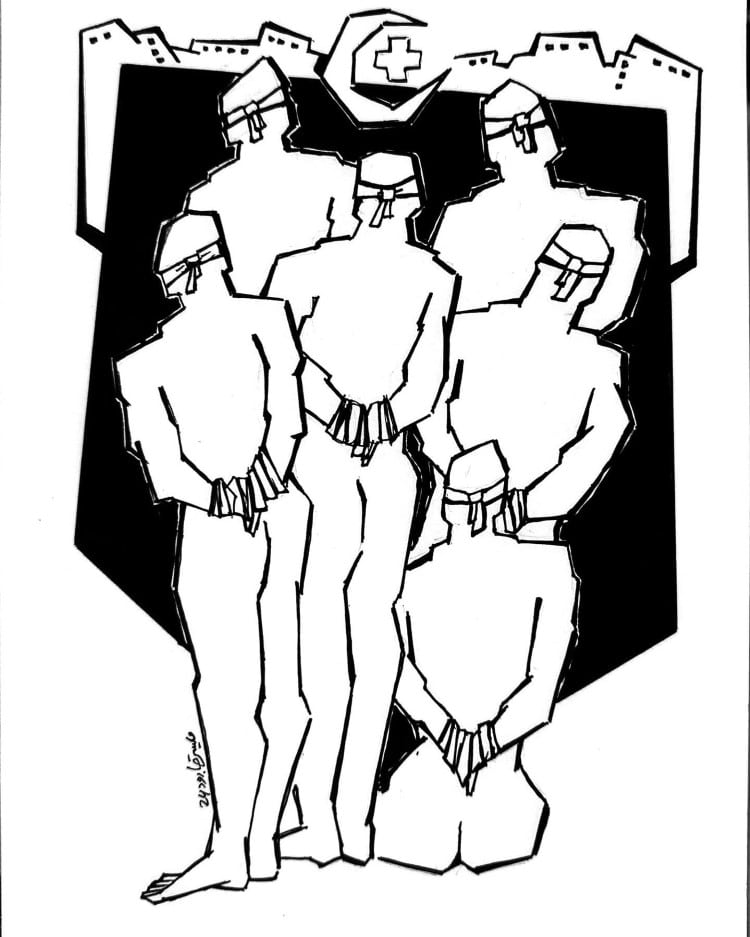
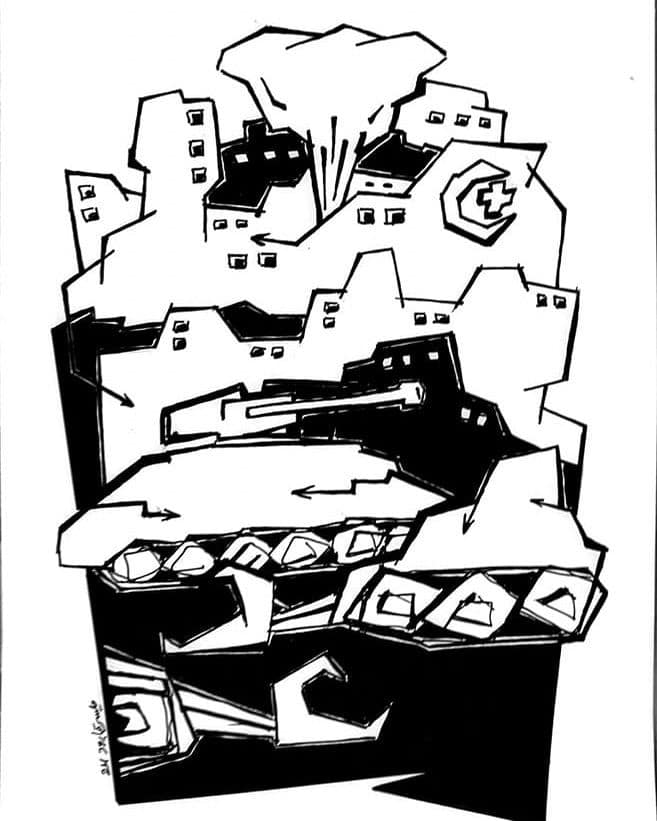
Has creating these drawings been therapeutic for you? How so?
Drawing on a daily basis was difficult due to the lack of resources, suitable places, and appropriate circumstances, but that did not prevent me from continuing.
Drawing was my only outlet to help me forget the fear, anxiety, and fatigue that accompanies us every day while carrying out family obligations and the sudden daily attempts to survive death that happen from one moment to the next.
I took the time to draw within a tiny area of my home, which I allocated to myself as a studio every time we were displaced. Drawing during war has become a message of challenge, of breaking the siege and fear and pushing back against barriers and borders.
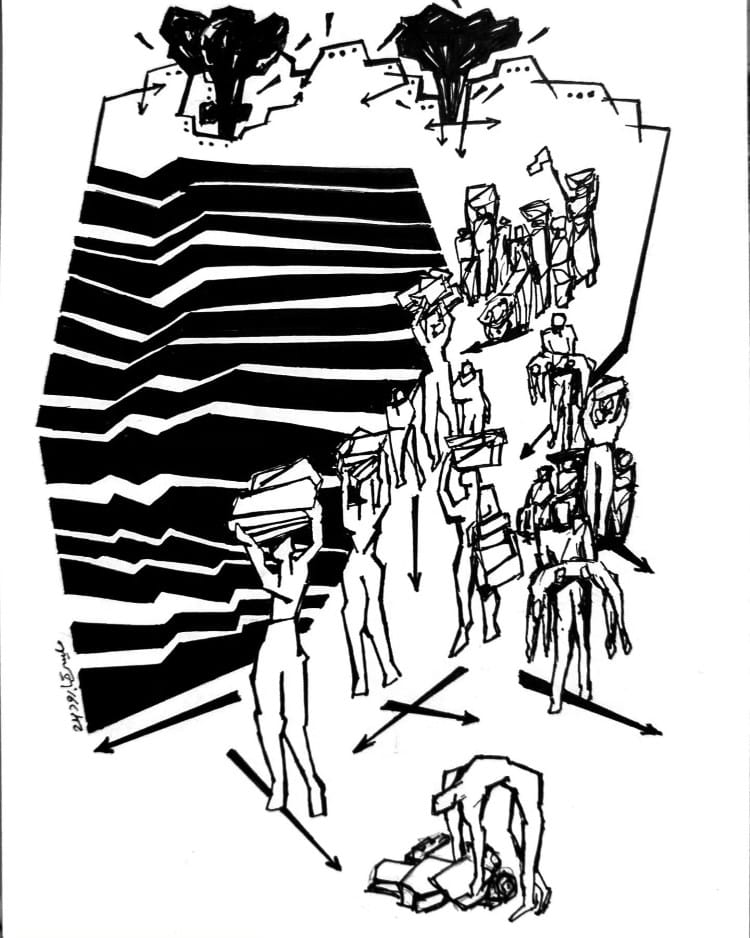
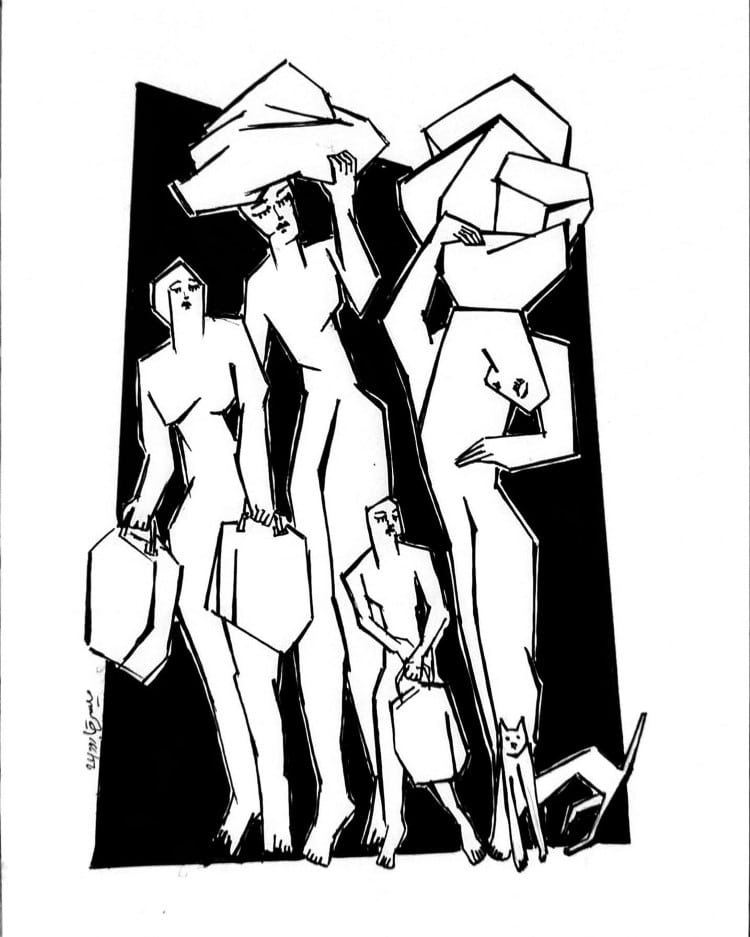
I know that your studio and home have been destroyed. Can you describe your living situation a bit?
Since October 7, everything has changed. On the second day of the war, planes destroyed my office. On the third day, they destroyed my house and my studio.
Can you imagine becoming homeless in an instant, losing all the things you like in one moment, and having everything destroyed? All the plans you made for your future and the future of your children change in an instant.
Imagine that the sounds of bombs, missiles, and bullets are relentless and surround you everywhere, and you have to try to survive to reach a new day.
Based on the instructions of the Israeli occupying army, I was forced to leave Gaza. At that time, I headed to southern Gaza, which the occupying army claimed was a safe haven for us away from the fighting.
I have been displaced more than 10 times since I left Gaza, and each time, the place has become smaller. We spend hours on the river to get food, drinking water, bathing water, and basic necessities for my family.
Eight difficult months have passed, and we are still experiencing moments of tragedy every hour. Goods and commodities—if there are any—are expensive, there is chaos and a lack of security and safety, the health care system has completely collapsed, and people’s health is deteriorating. Sickness and disease are spreading rampantly, and medicine is not available.
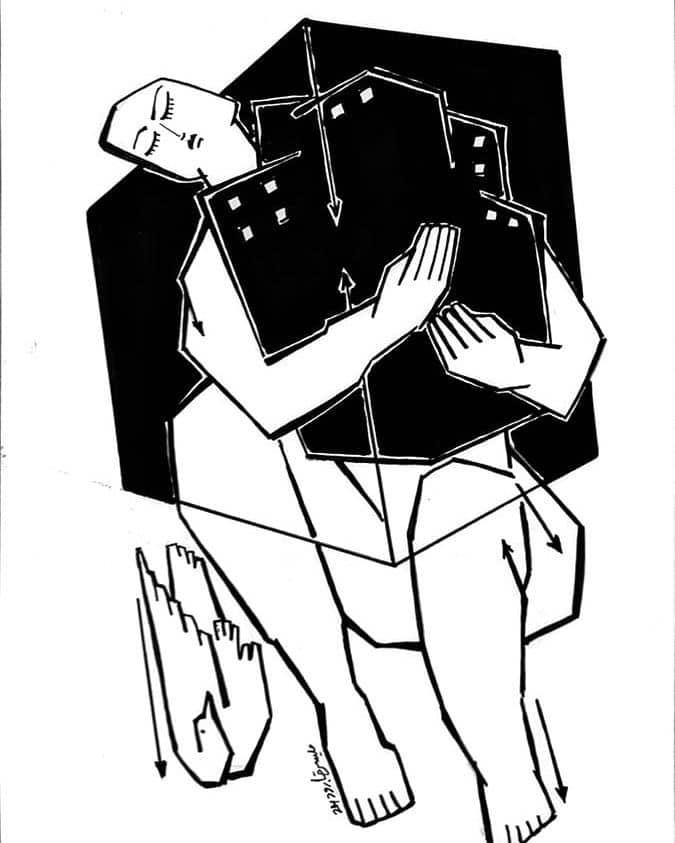
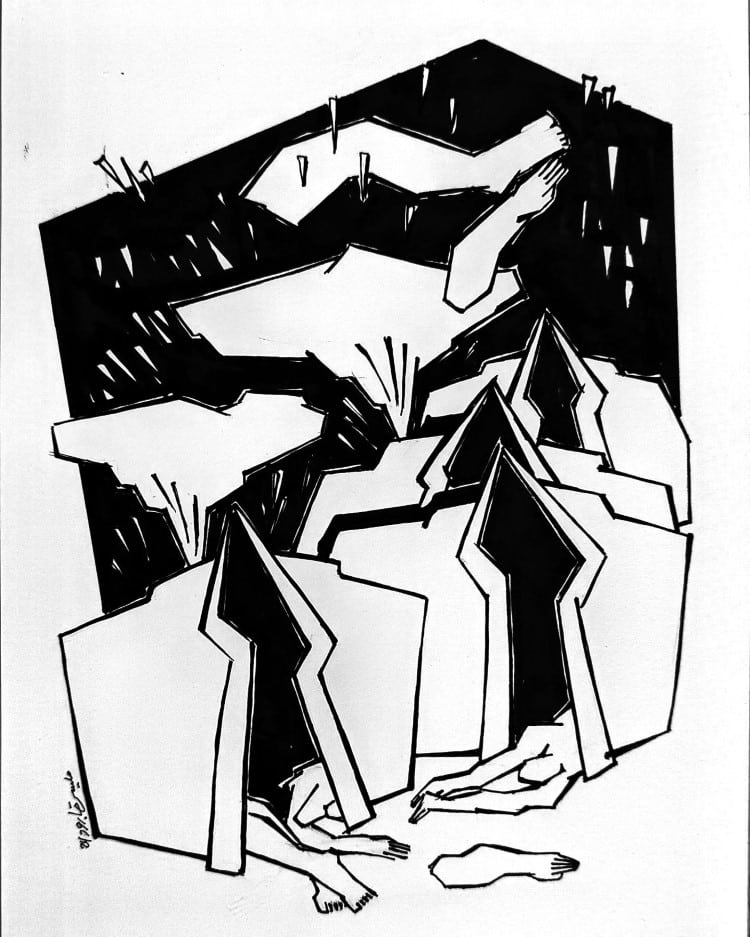
What do you think is the most common misconception people have of what is happening in Gaza right now?
Everyone believes that what is happening in Gaza is a war against an extremist faction, but the truth is otherwise. What is happening in Gaza is part of what is happening in all of Palestine. What is happening in Gaza is a rolling and terrifying war of annihilation. What is happening in Gaza is a decision to kill, exile, and destroy an entire people.
What is happening in Gaza is an extension of what has been happening for the 76 years since the Nakba.
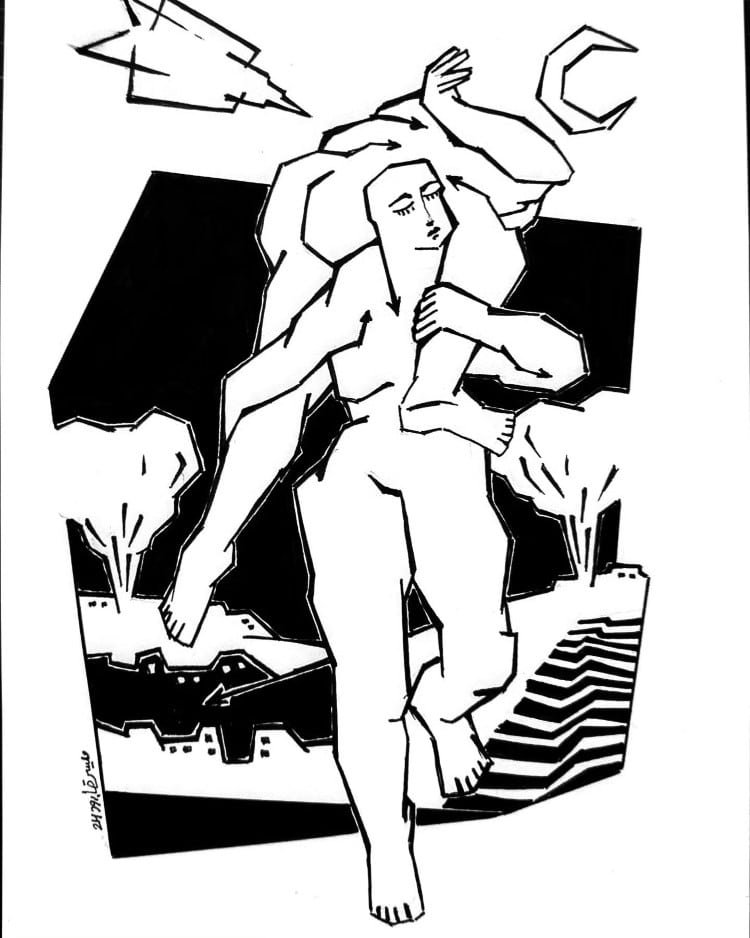

What do you hope that the outside world takes away by looking at your art?
I hope that the world sees the truth as it is, not as the occupation promotes it. Perhaps this is what I try to express in my daily drawings as a witness to the massacre. I try to convey the truth and the tragedy that we live and that we are going through.
I portray the everyday scenes that I live, translating them artistically and sharing them with my friends and my followers.
I convey a message through drawing to tell everyone that despite the pain, the killing, and the daily destruction…I am still alive.
Maisara Baroud: Instagram
